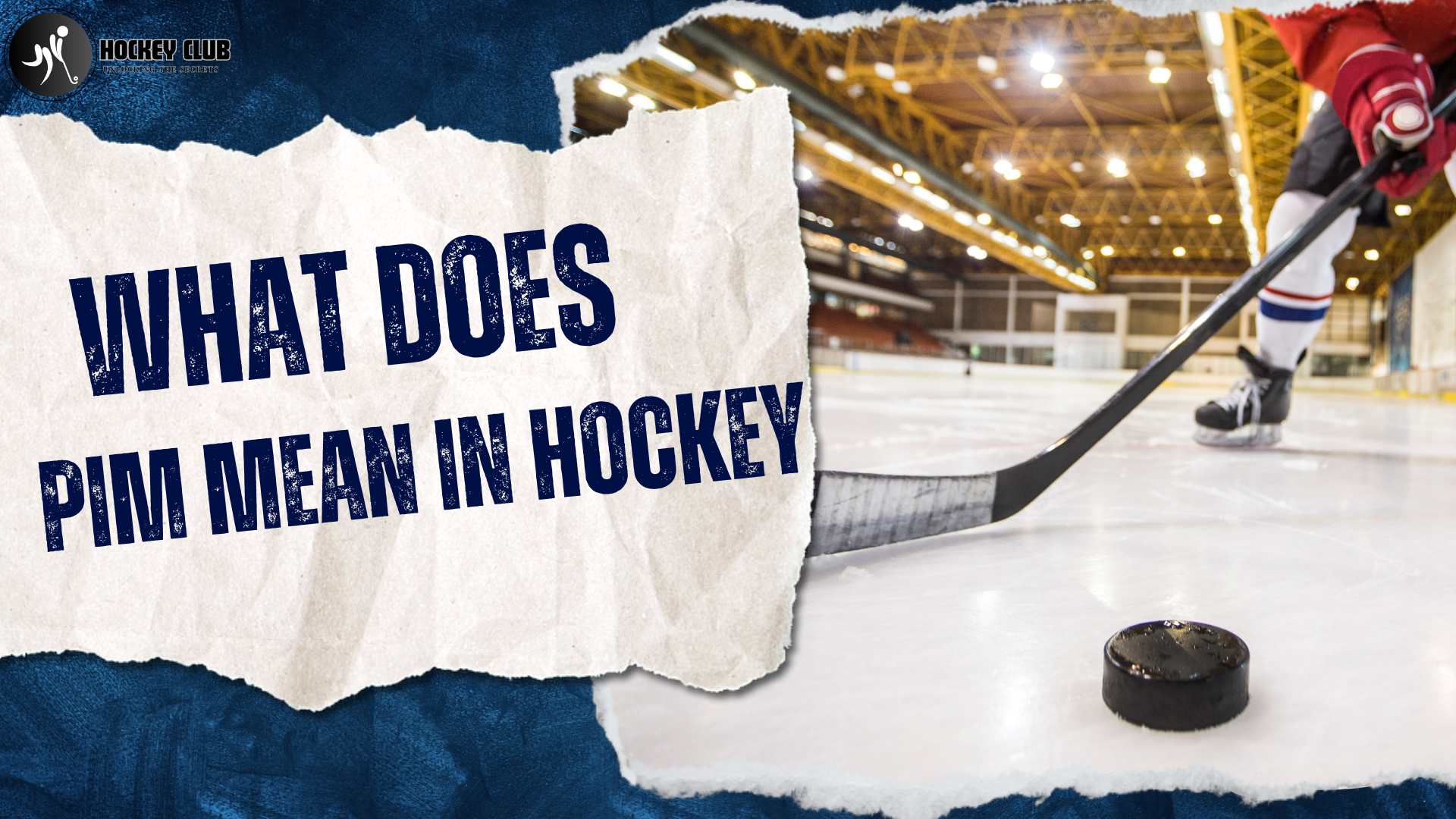What Does PIM Mean in Hockey? Discover the meaning of PIM in hockey and its significance in the game. Learn all about PIM and its impact on players and teams.
Introduction to What Does PIM Mean in Hockey?
As a passionate hockey enthusiast, I’ve always been intrigued by the various statistics and metrics that are used to measure a player’s performance on the ice. One of the most commonly discussed, yet often misunderstood, metrics is PIM – or Penalties In Minutes. In this comprehensive article, we’ll dive deep into the world of PIM, exploring its meaning, significance, and impact on the game of hockey.
It reflects the time a player spends in the penalty box due to various infractions committed during the game. Understanding PIM is essential for both fans and players alike, as it can have a significant impact on the outcome of a game.
Credit:Coach Jeremy
Understanding the Meaning of PIM
PIM, or Penalty Minutes, is a metric used in hockey to track the number of minutes a player has been penalized during a game or a season. It serves as an indicator of the player’s discipline, physical play, and adherence to the rules of the game.
The Importance of PIM in the Game
PIM is an important factor in hockey because it can directly affect the flow of the game, the team’s strategy, and the final outcome. When a player is sent to the penalty box, their team is left shorthanded, which can put them at a disadvantage and increase the opposing team’s chances of scoring.
Different Types of Penalties in Hockey
In hockey, there are various types of penalties that can result in PIM, including minor penalties, major penalties, misconduct penalties, and game misconduct penalties. Each type of penalty carries a different time penalty and has a different impact on the game.
Hockey is a fast-paced, physical sport, and as such, there are various types of penalties that can be assessed to players. These range from minor infractions, such as tripping or hooking, to major penalties, such as fighting or checking from behind. Understanding the different types of penalties and their corresponding PIM values is crucial to comprehending the significance of this statistic.
What Does PIM Stand For?
PIM stands for “Penalty Minutes,” a term used to quantify the amount of time a player has been penalized during a hockey game. This includes any infractions, such as tripping, hooking, roughing, or fighting, that result in the player being sent to the penalty box.
The Significance of PIM in Hockey
PIM is a significant statistic in hockey because it reflects a player’s discipline, physical play, and adherence to the rules of the game. Players with high PIM are often seen as more aggressive or physical, while those with low PIM are typically considered more disciplined and team-oriented.
Historical Background of PIM in Hockey
The concept of PIM has been around since the early days of organized hockey. As the sport evolved, the rules and penalties have been refined, and the importance of PIM has grown. Today, PIM is a crucial component of hockey statistics and is closely monitored by coaches, players, and fans alike.
How PIM is Calculated in Hockey
PIM is calculated by adding up the total number of minutes a player has spent in the penalty box during a game or a season. Each penalty type has a specific time associated with it, and the total minutes are added up to determine the player’s PIM.
Importance of PIM in Game Statistics
PIM is an essential part of hockey statistics, as it provides valuable insights into a player’s discipline, physicality, and overall contribution to the team. Coaches and management often use PIM as a factor in player evaluation and roster decisions.
PIM Records in the NHL
The NHL has several PIM records, both for individual players and teams. Some of the most notable records include the single-season PIM record, the career PIM record, and the team PIM record. These records highlight the significance of PIM in the sport of hockey.
How PIM Affects Team Dynamics
PIM can have a significant impact on a team’s dynamics and performance. When a team’s players accumulate high PIM, it can disrupt the team’s rhythm, create defensive vulnerabilities, and ultimately affect the team’s chances of winning.
Strategies to Minimize PIM
Coaches and players often work on strategies to minimize PIM, such as improving discipline, reducing unnecessary physical play, and focusing on smart, tactical play. By reducing PIM, teams can maintain their full strength on the ice and increase their chances of winning.
Famous Players Known for High PIM
Throughout the history of hockey, there have been several players who have been known for their high PIM. These players are often regarded as physically dominant or aggressive, and their PIM numbers have become a part of their legacy.
Misconceptions about PIM
Despite the importance of PIM in hockey, there are some misconceptions about its significance. Some people may view high PIM as a sign of a player’s toughness or value, when in reality, it can also be an indicator of a lack of discipline or poor decision-making.
PIM in Relation to Team Performance
While high PIM can sometimes be associated with physical play and a team’s overall competitiveness, it is not always a direct indicator of team success. In fact, teams that are able to maintain discipline and minimize PIM often perform better in the long run.

Credit: ebay.com
Conclusion: Embracing the Significance of PIM in Hockey
In conclusion, PIM is a crucial statistic in the sport of hockey, reflecting a player’s discipline, physical play, and adherence to the rules of the game. By understanding the meaning and significance of PIM, we can gain a deeper appreciation for the nuances of the sport and the strategies employed by teams and players.
If you’re a hockey fan, or simply curious about the intricacies of the game, I encourage you to dive deeper into the world of PIM and explore how it shapes the sport. Whether you’re a player, a coach, or a passionate spectator, understanding PIM can enhance your appreciation for the game and help you better analyze the performance and strategies of your favorite teams and players.




